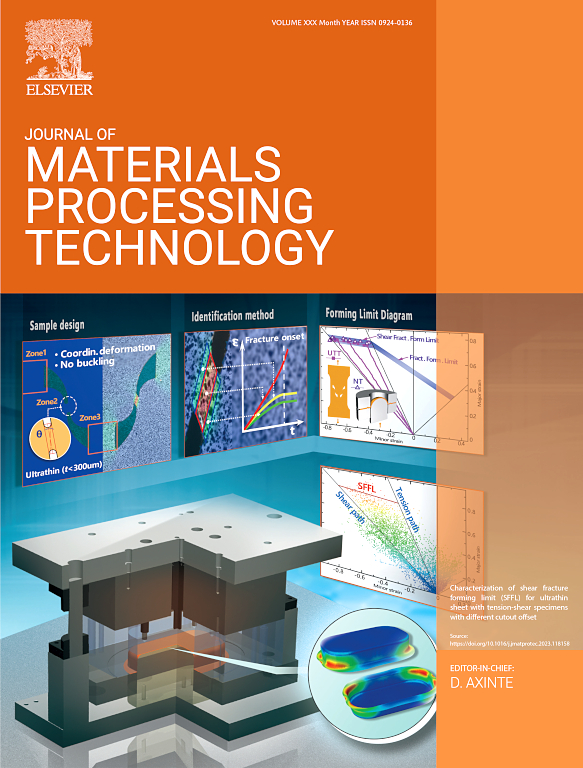Pressure-dependent shape adaptive multi-jet polishing for edge effect restraint
IF 6.7
2区 材料科学
Q1 ENGINEERING, INDUSTRIAL
Journal of Materials Processing Technology
Pub Date : 2025-01-13
DOI:10.1016/j.jmatprotec.2025.118734
引用次数: 0
Abstract
Fluid jet polishing (FJP) can achieve high surface quality and form accuracy in finishing freeform surfaces. Due to its advantages, FJP has been widely used in the ultra-precision manufacturing process of high-end components. However, the edge effect in FJP poses a great challenge to the uniform material removal control at the edge, which has not been investigated in depth hitherto. The non-uniform material removal at the edge deteriorates the form accuracy and affects the functional performance of components, especially in the field requiring extremely high precision. The traditional strategy for restraining the edge effect through the movement system is limited by the extremely high acceleration speeds within a small distance. To address this problem, the cause of the edge effect in FJP is first revealed by computational fluid dynamics (CFD) simulation. Hence, this study presents a pressure-dependent shape-adaptive multi-jet polishing (PDSAMJP) system to restrain the edge effect. The material removal discrepancies were compensated for by adjusting the jet pressure, rather than modifying the feed rate of the machine tool. A surface generation model at the edge was established to optimize the jet pressure distribution. The effectiveness of the PDSAMJP system was validated by jet pressure response measurements and a series of polishing experiments. Compared to traditional jet polishing, the PDSAMJP method enhanced the radius of curvature of the edge surface from 15.2–41.4 μm to 73.2–143.9 μm by mitigating edge collapse. The success of this study provides an approach to restraining the edge effect of FJP, thereby enhancing the manufacturing accuracy of ultra-precision freeform surfaces. Furthermore, the principles established herein can be applied to other polishing processes, such as bonnet polishing, to achieve uniform material removal by adjusting a parameter with a fast response, without compromising the stability of the movement system.
求助全文
约1分钟内获得全文
求助全文
来源期刊

Journal of Materials Processing Technology
工程技术-材料科学:综合
CiteScore
12.60
自引率
4.80%
发文量
403
审稿时长
29 days
期刊介绍:
The Journal of Materials Processing Technology covers the processing techniques used in manufacturing components from metals and other materials. The journal aims to publish full research papers of original, significant and rigorous work and so to contribute to increased production efficiency and improved component performance.
Areas of interest to the journal include:
• Casting, forming and machining
• Additive processing and joining technologies
• The evolution of material properties under the specific conditions met in manufacturing processes
• Surface engineering when it relates specifically to a manufacturing process
• Design and behavior of equipment and tools.
 求助内容:
求助内容: 应助结果提醒方式:
应助结果提醒方式:


